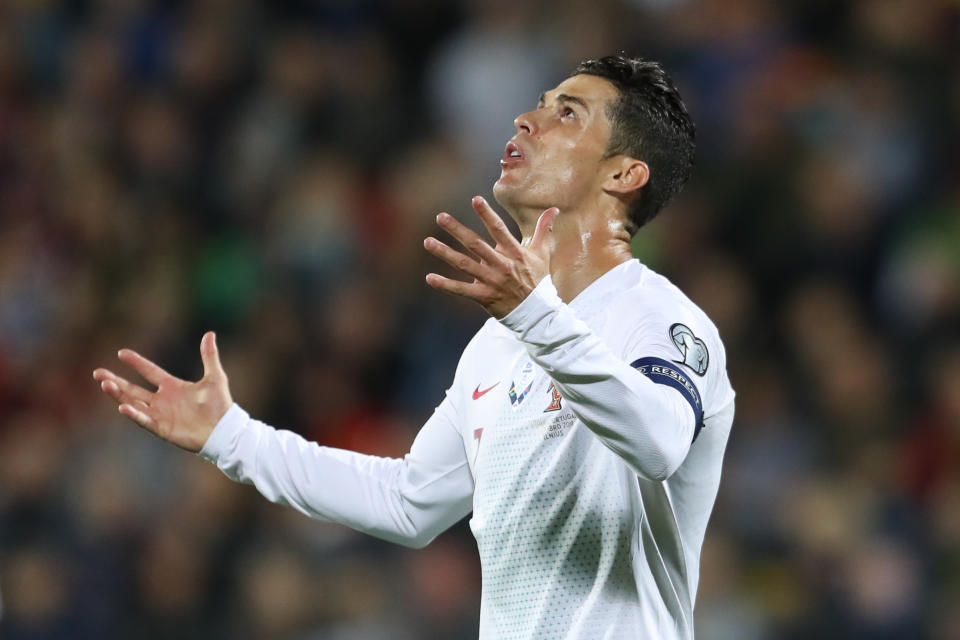Why soccer should scrap midseason international breaks and do this instead
It happens every year. The European domestic seasons begin, we all start having fun, and just as clubs start to gain momentum ... everything is abruptly halted by a two-week international break.
It’s the soccer equivalent of stopping to tie your shoes 50 yards into a marathon. And it takes two weeks to tie them up.
Premier League sides played just four games before their biggest stars were sent off to far-flung corners of the world for international fixtures of varying importance. Spain, France, Italy and Germany have played fewer matches, and any players who were signed on the transfer deadline were likely sent straight off to report for international duty, rather than settle in with their new employer.
(That timing is only beneficial for someone like Neymar, who traveled to the United States for some money-spinning Brazil friendlies, rather than having to face the music at a Paris Saint-Germain team he failed to escape.)
Stateside, meanwhile, MLS continues in its stance of completely ignoring international breaks, to the detriment of the league. Over 100 MLS players have joined up with their national sides, forcing franchises to field far weaker starting XIs at a crucial and climactic point in the season.

After this break, weary players will return to their clubs. Some will report back a matter of hours before their next domestic match, having put in some serious air miles, in the name of friendlies or uncompetitive tournament qualifiers. This, in turn, affects the quality of the top-tier domestic product, the bread-and-butter of the beautiful game that represents the core of our fandom.
And it’s not just the world’s top league that are adversely affected by the international break. Games in England’s third tier, for example, are regularly postponed due to international call-ups.
To be fair, the international game can be tremendous fun. USMNT fans may need some reminding of this, but it can be thrilling to see your team progress through a major tournament, and the manner in which a World Cup puts the entire planet on the same page is a triumph for the human condition.
But international breaks are unremittingly terrible.
Take this current break, for example. The U.S. national team have been consigned to (oft-frustrating) tune-up friendlies, while South America’s finest have also put their top talent on long-haul flights for the sake of meaningless contests.
In Europe, meanwhile, Euro 2020 qualification has delivered nothing in the form of shocks, while the high score lines have reflected the lack parity in the competition The winning side has scored four or more goals on 20 occasions in this international break, while Germany’s clash with the Netherlands represents the only “top tier” clash.
[ Follow Yahoo Soccer on Twitter and Facebook ]
Domestic European managers — who have no incentive to send their players to international camps during the season — are forced to sit back and watch as their stars put needless miles on the clock, risking injury at the very start of the season. It’s little wonder that Sir Alex Ferguson used to report that Ryan Giggs had an “injury” every time he was due to play a friendly with Wales. His post-break recovery skills were often miraculous.
When their clubs do not cook up excuses, Premier League players have to leave behind the employer who pays their wages, disrupting their day job of competing in the world’s biggest league. Have England’s stars learned much from straightforward wins against Bulgaria and Kosovo? Will they have spent more time adapting to an unfamiliar system and new teammates than is worthwhile?
Ladies and gents, it is time to consider scrapping mid-season international breaks.
But lovers of international soccer need not despair, for there is a alternative solution that will allow for tournament qualification and a fix of jingoistic sporting action.
Instead of parsing international breaks out through the year, why not condense all qualification into the summers of odd years?
What if qualification for Euro 2020 had been contested entirely over the summer of 2019 in a mega 55-team qualification tournament? The continent’s minnows and behemoths would surely benefit from the tournament conditions alike.
Qualification for the 2022 World Cup, meanwhile, is currently being dragged out over two and a half years. What if it was contested in the summer of 2021, en masse?
And in the CONCACAF region, perhaps the biennial Gold Cup could alternate between a World Cup qualification tournament and a contest in its own right.

Wouldn’t it be brilliant to have a full slate of competitive international fixtures during a two-month period of the summer? Yes. Yes it would.
There are myriad benefits to restricting international matches to the summer. The momentum of the domestic leagues would not be disrupted, and players could be afforded the opportunity for more rest (no international breaks would lessen the need to play more than one fixture per week).
Instead of spending a fortnight adjusting to a new system, before returning to “normal life”, players could enjoy a concentrated period of time with their national set-up, which would likely improve the quality of play.
And fans would effectively be treated to the prospect of meaningful soccer every single summer—either in a qualification tournament, or the tournament proper.
The Nations League format, which has been successful in Europe and North America, has helped to improve international breaks by decreasing the amount of pointless friendlies. But the format could be revamped further, and condensed into a hectic-but-brilliant summer format. It would likely be enthralling, and both fans and players would be able to draw a clear line between support for club and country.
After this break concludes, the European domestic season will be interrupted for international matches three further times. Clubs, players, managers and fans are probably not thrilled by the prospect of more underwhelming qualifiers and friendlies augmenting the important club action.
Admit it. Confining international soccer to the summer makes sense.
More from Yahoo Sports:


